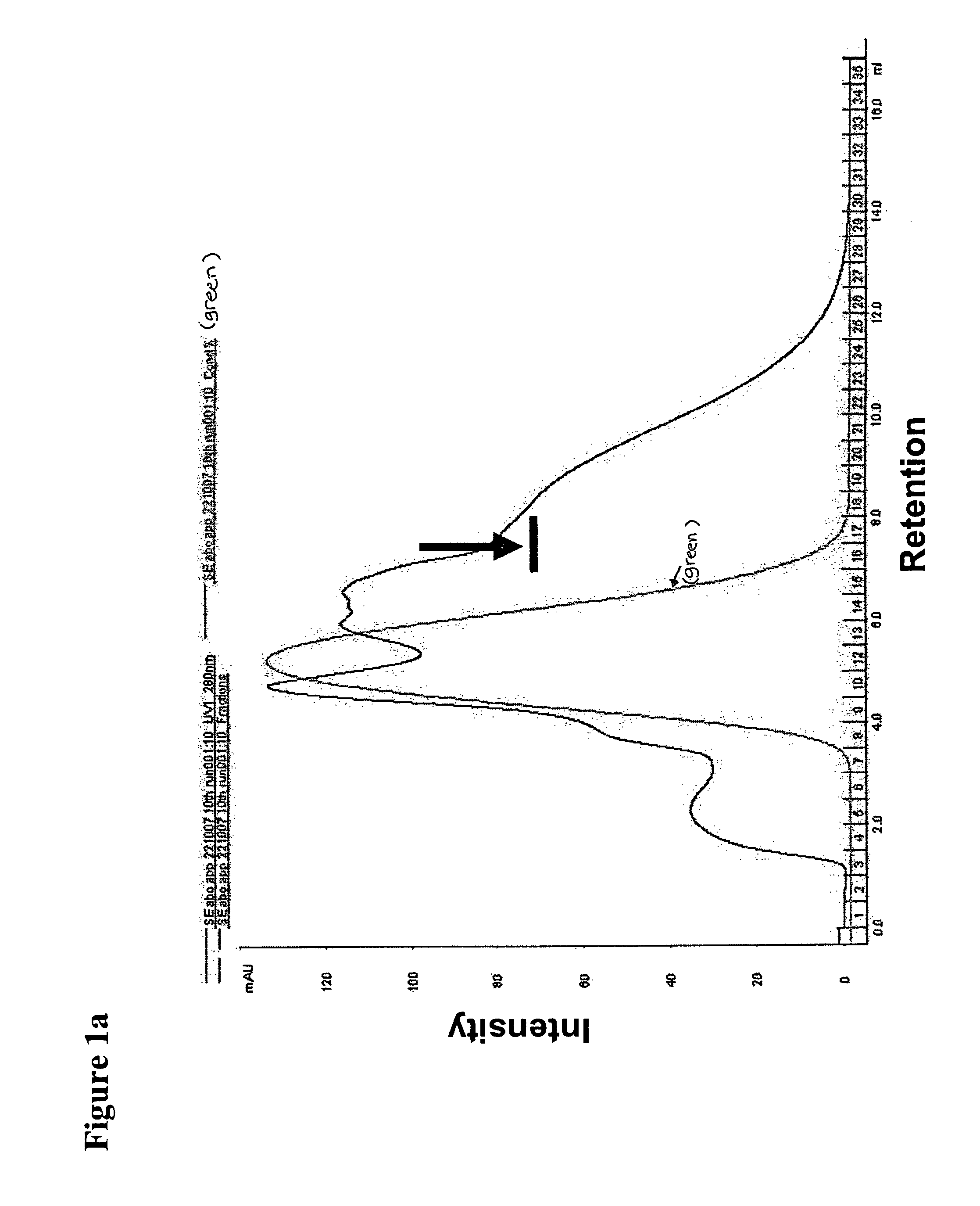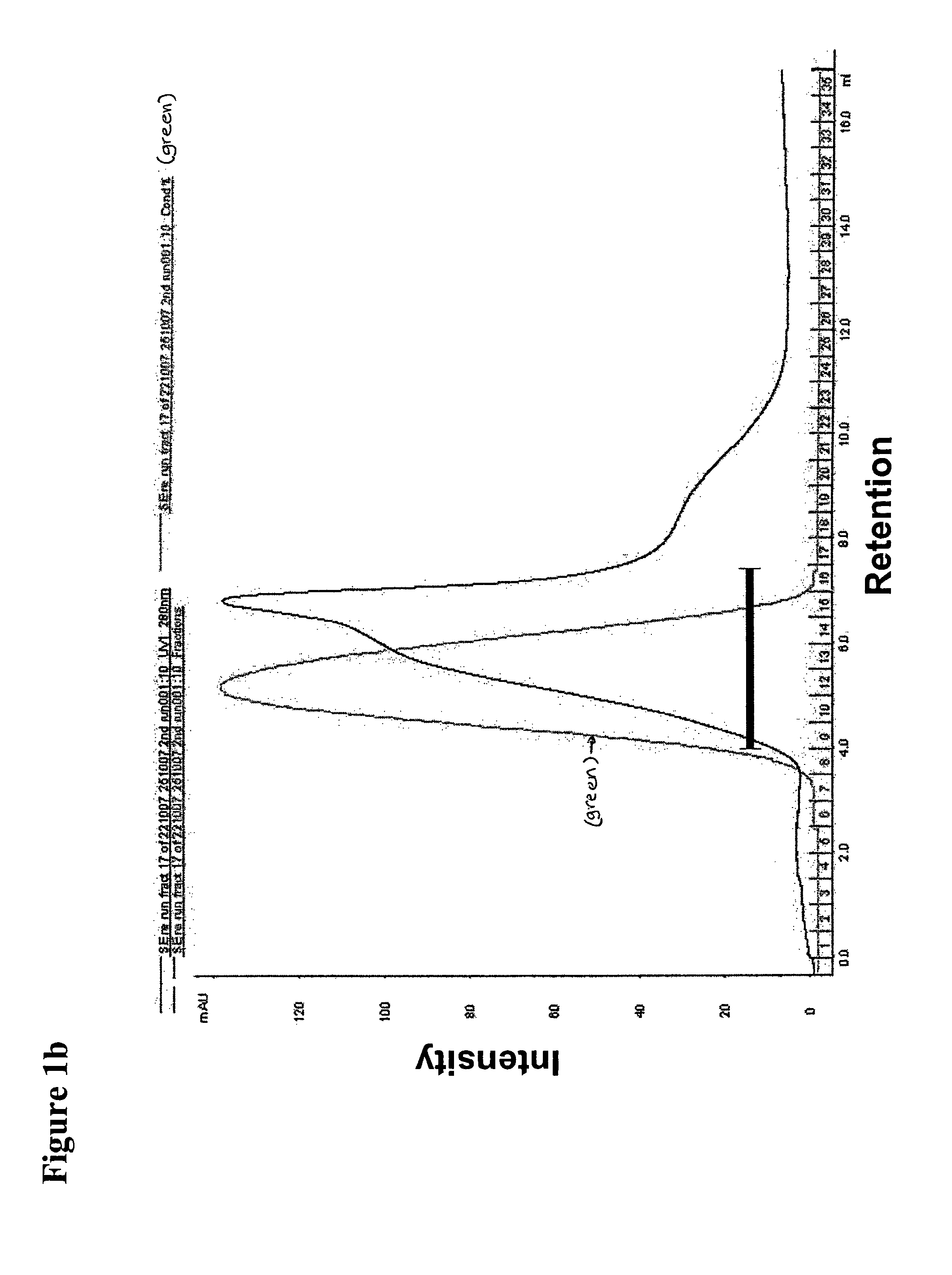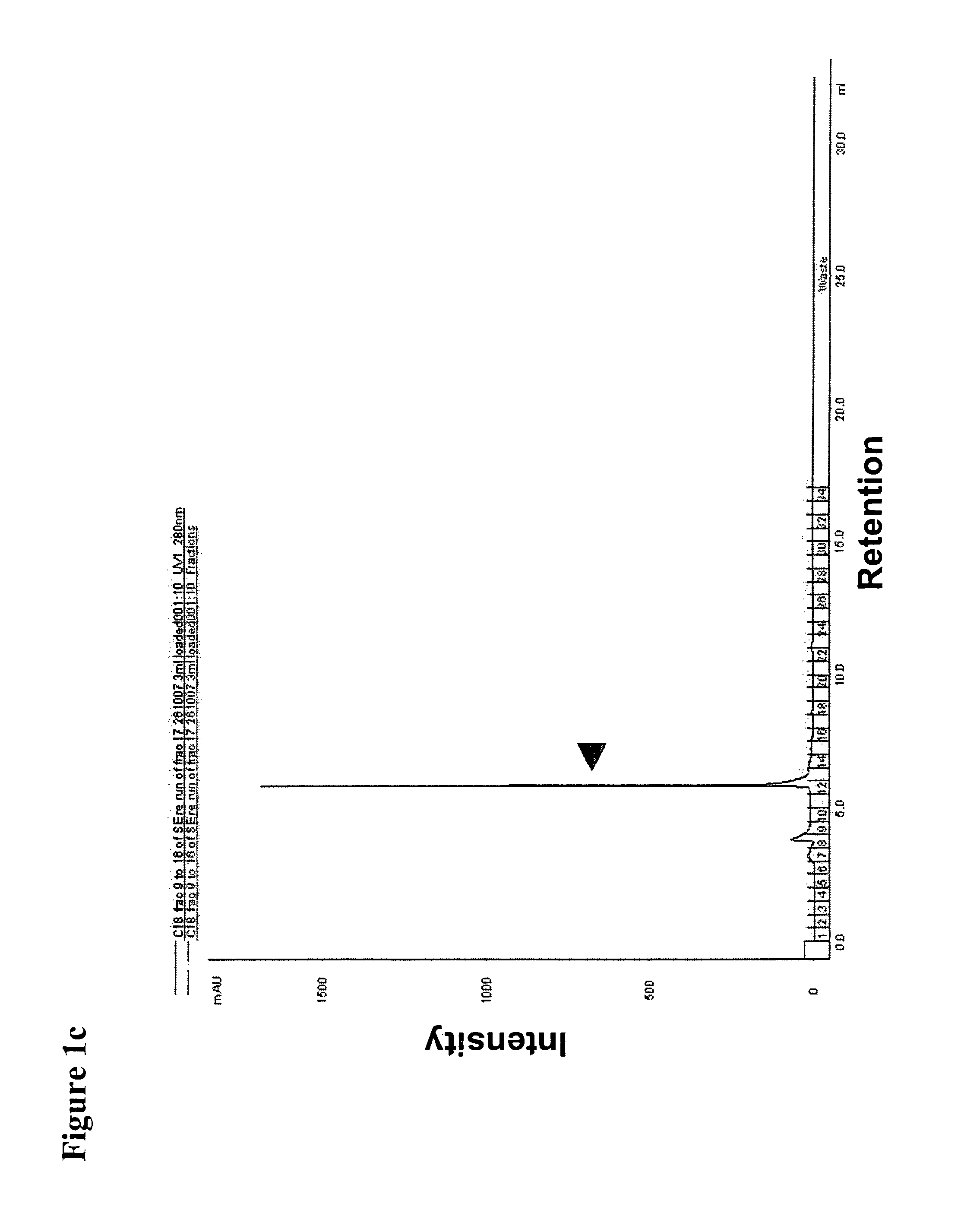Digoxin-like fungal glycoside with cytotoxic properties: novel assay and applications
a technology of cytotoxic properties and fungal glycosides, applied in the field of bioassays, can solve the problems of morphogenesis, aberrant cytokinesis, etc., and achieve the effects of reducing heart rate, potential antifungal activity, and enhancing hypersensitive respons
- Summary
- Abstract
- Description
- Claims
- Application Information
AI Technical Summary
Benefits of technology
Problems solved by technology
Method used
Image
Examples
example 1
Methodology for the Isolation of ATS from abc3Δ Strain of M. grisea
[0032]Conidia were harvested from 8 to 9 day old fungal cultures (abc3Δ strain) and suspended in de-ionized water to get a count of approximately 1×106 conidia per ml. Magnaporthe abc3Δ and the S. pombe MBY2838 strain discussed herein (including throughout the various Examples and other disclosure) can be easily made by one of ordinary skill in the art using routine experimental protocols (detailed in Sun et al., 2006) and the requisite gene sequences available in the public domain [Genbank accession #DQ156556 (ABC3) and SPCC663.03 (PMDI)]. Two hundred microlitres each of such conidial suspension was placed on to a glass coverslip and the conidia were allowed to germinate and form mature appressoria over 24 h under high humidity. At the end of incubation period, the liquid from the coverslips was collected as supernatant. The appressoria on each coverslip were covered with 100 μl of 0.5 M solution of NaCl and incuba...
example 2
In vitro Analysis of ATS Antifungal Activity Against Fission Yeast
[0033]Approximately, 3 μl of 1×107 cells / ml from overnight grown wild-type S. pombe culture MBY104 or MBY2838 strain expressing M. grisea ABC3 (pmd1::URA4; MgABC3+) was inoculated in 150 μl fresh YES medium in a 96 well plate. The cells were incubated at 25° C. on a rocking platform in presence of 50 μl of de-ionised water (untreated) or 10 ng of purified ATS (treated). Cell density of untreated or treated wild-type yeast cells was checked in terms of absorbance after every one hour over 5 to 6 generations. For microscopic observation of untreated and treated samples, the cells were harvested, washed, stained with calcofluor white after 6 h of incubation, and examined by epifluorescent illumination (360 nm excitation) on an Olympus IX71 microscope. Effect of ATS on karyogamy or mitosis was studied by using an S. pombe strain MBY816; (Wang et al., 2002), where the cells were treated as described above and GFP epifluore...
example 3
Estimation of Minimum Inhibitory Concentration (MIC) of Digoxin, Digoxigenin, and Ouabain For S. pombe
[0034]Approximately, 1×107 cells / ml from overnight grown culture of MBY 104 was inoculated in 20 ml fresh YES medium in 250 ml flasks. The cells were incubated at 25° C. on a shaker in absence or presence of different concentrations of digoxin. A stock of 1 mM standard glycosides (Sigma Aldrich, USA) was prepared by adding 7.8 mg, 3.9 mg, and 7.28 mg of digoxin, digoxigenin, and ouabain, respectively, in 10 ml of 50% ethanol. A working stock of 200 μM solution was prepared by diluting 1 mM stock with fresh YES medium. Further dilutions were made from this working stock by adjusting total volume with YES to 20 ml. Cell density of untreated or treated wild-type yeast cells was checked in terms of absorbance after every one hour over 5 to 6 generations. Experiments were performed in duplicate each time and confirmed by several biological replicates.
PUM
| Property | Measurement | Unit |
|---|---|---|
| flow rate | aaaaa | aaaaa |
| flow rate | aaaaa | aaaaa |
| total volume | aaaaa | aaaaa |
Abstract
Description
Claims
Application Information
 Login to View More
Login to View More - R&D
- Intellectual Property
- Life Sciences
- Materials
- Tech Scout
- Unparalleled Data Quality
- Higher Quality Content
- 60% Fewer Hallucinations
Browse by: Latest US Patents, China's latest patents, Technical Efficacy Thesaurus, Application Domain, Technology Topic, Popular Technical Reports.
© 2025 PatSnap. All rights reserved.Legal|Privacy policy|Modern Slavery Act Transparency Statement|Sitemap|About US| Contact US: help@patsnap.com



